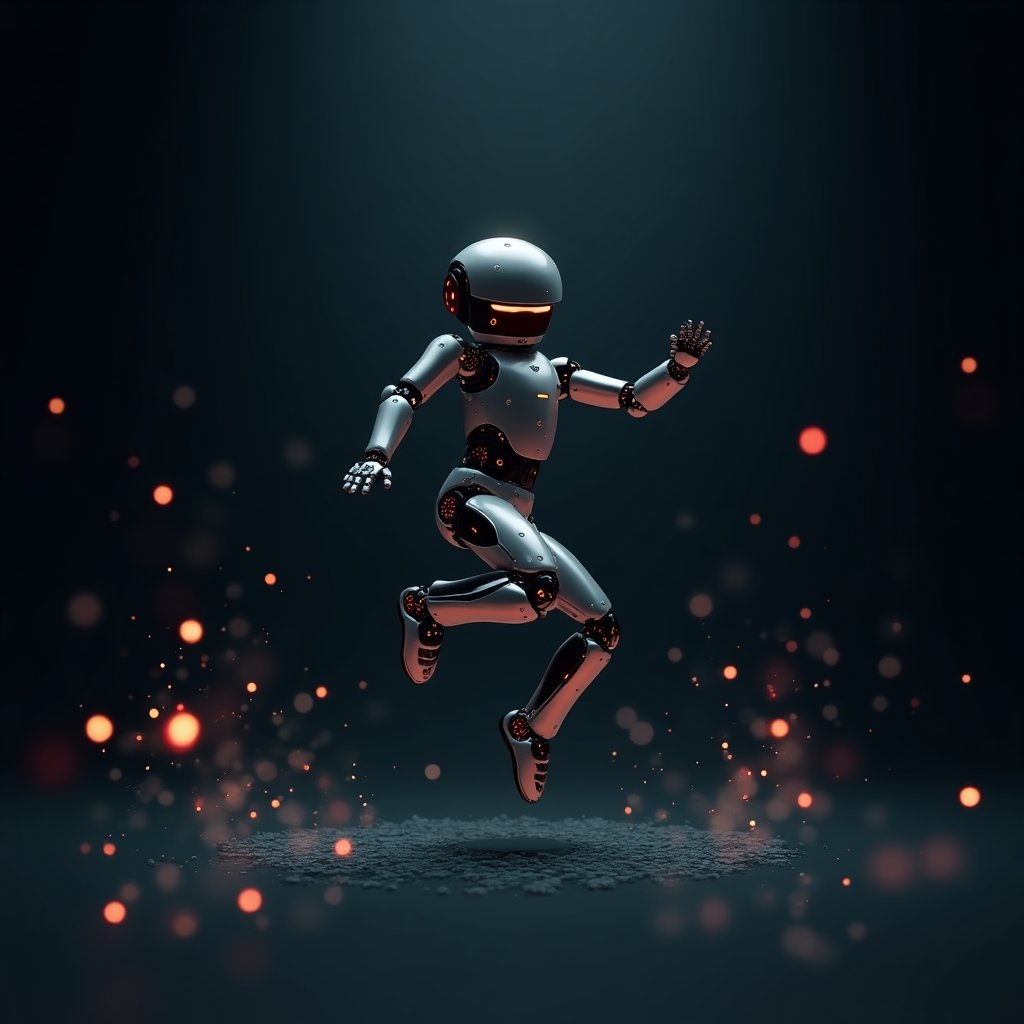The Rise of Engine AI: A New Player in Robotics
Engine AI burst onto the scene in 2023, and within months, it was making headlines. The company’s first bipedal robot, the SA1, launched in July 2024, was followed by the full-size general-purpose humanoid robot, the SEO1, in October. These robots didn’t just walk—they walked like humans. For years, achieving a human-like gait was one of the biggest challenges in robotics. Even Tesla’s much-hyped Optimus bot struggled with this. The only company that had come close was Boston Dynamics, but Engine AI managed to leapfrog even them.
When Engine AI released its first demo video, the world was stunned. The robot’s movements were so fluid and natural that many people thought was CGI. Even experts in the field, like Dr. Jim Fan, a senior research manager at NVIDIA, initially doubted its authenticity. But as more footage emerged, it became clear: Engine AI had achieved something extraordinary. Their robots weren’t just walking—they were running, doing push-ups, and even performing front flips. This wasn’t just a step forward; it was a giant leap for robotics.
Why Human-Like Movement is So Hard
Walking like a human is incredibly complex. It requires precise coordination of muscles, joints, and balance. For robots, this is even harder because they lack the natural flexibility and adaptability of the human body. Most robots walk with a stiff, mechanical gait, which limits their functionality. Engine AI’s breakthrough was in creating a robot that could mimic human movement with uncanny accuracy. This wasn’t just about hardware—it was about software, too. The company used advanced simulation techniques, human movement data, and reinforcement learning to train its robots. The result? A robot that moves so naturally, it’s hard to believe it’s real.
The Role of Simulation and AI
One of the key factors behind Engine AI’s success is its use of simulation. In the past, engineers would build robots first and then try to simulate their movements. Engine AI flipped this approach. They designed their robots specifically to perform well in simulations, which allowed them to train the robots more effectively using AI. This approach, combined with motion capture data from human movements, enabled the robots to learn how to walk, run, and even dance like humans.
Dr. Jim Fan, who leads NVIDIA’s Project GR00T, explained how Engine AI’s robots were trained. The process involved three key steps: designing the robot for simulation, using human movement data to guide the robot’s learning, and adding random variations to the simulation to make the robot more robust. This combination of hardware and software innovation is what sets Engine AI apart.
From Walking to Dancing: Engine AI’s Continued Innovations
Engine AI didn’t stop at walking. In 2025, the company released a video of its robot performing a front flip—a maneuver that’s even more challenging than a backflip. This required precise balance, rapid weight shifting, and coordinated limb movements. The fact that Engine AI’s robot could pull this off is a testament to the company’s hardware and software capabilities.
But the real showstopper came when Engine AI’s robot recreated the iconic axe gang dance from the 2004 film Kung Fu Hustle. The robot, dressed like an old-school gangster, danced alongside two professional dancers with such precision and fluidity that it was hard to tell it wasn’t human. This demonstration pushed the boundaries of what robots can do, showcasing their potential for complex, coordinated tasks.
China’s Growing Dominance in Robotics
Engine AI’s success is part of a larger trend: China’s rapid rise in the field of robotics. The country has been investing heavily in AI and robotics to gain an edge in the global tech rivalry with the United States. With an aging population and a falling birth rate, China sees robotics as a solution to labor shortages and economic challenges. Engine AI is just one of many Chinese companies leading this charge.
In April 2025, Beijing hosted a half-marathon featuring robots from more than 20 companies. This event, organized by the Beijing Economic-Technological Development Area, was a showcase of China’s advancements in robotics. It’s clear that China is on track to become a global leader in this field, and Engine AI is at the forefront of this movement.
What’s Next for Engine AI and Robotics?
As we look to the future, it’s exciting to imagine what Engine AI and other robotics companies will achieve. If Engine AI’s progress over the past two years is any indication, the next decade will bring even more groundbreaking innovations. From humanoid robots that can perform complex tasks to machines that can think and learn like humans, the possibilities are endless.
But with these advancements come questions. How will robots impact the job market? What ethical considerations should we keep in mind as robots become more integrated into our lives? And how can we ensure that these technologies are used for the benefit of all? These are the questions we need to grapple with as we move forward.
Join the Conversation
What do you think about Engine AI’s innovations? Are you excited about the future of robotics, or do you have concerns? Share your thoughts in the comments below and join the iNthacity community. Become a permanent resident of the "Shining City on the Web" and be part of the conversation shaping the future of technology. Like, share, and let’s explore the possibilities together.
Disclaimer: This article may contain affiliate links. If you click on these links and make a purchase, we may receive a commission at no additional cost to you. Our recommendations and reviews are always independent and objective, aiming to provide you with the best information and resources.
Get Exclusive Stories, Photos, Art & Offers - Subscribe Today!

























Post Comment
You must be logged in to post a comment.